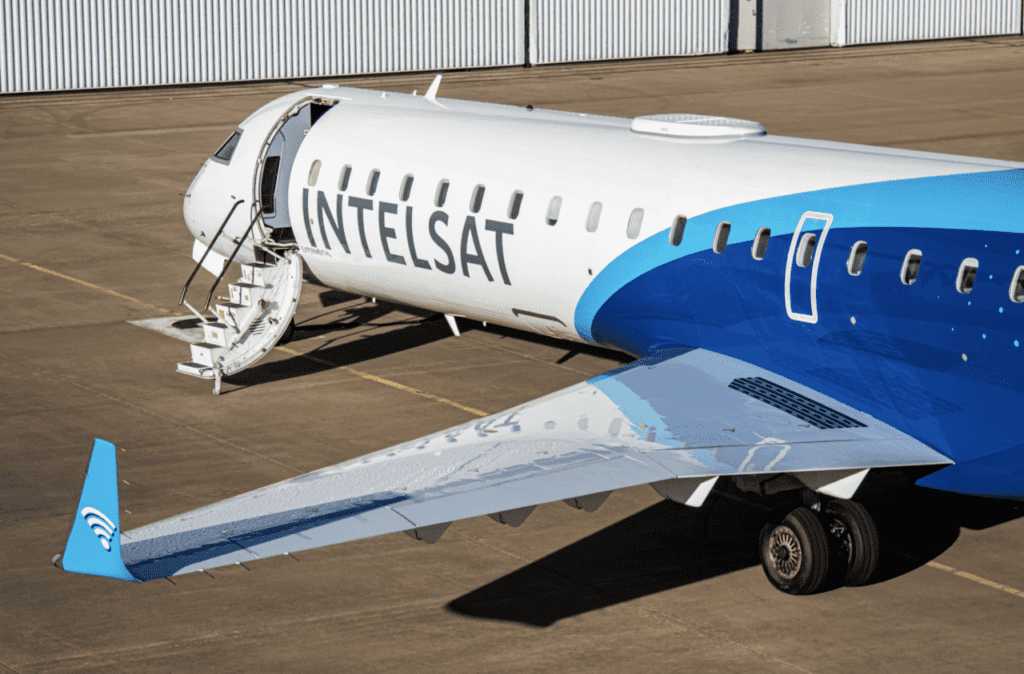
Intelsat has completed successful in-flight testing of its new electronically steered array antenna that enables streaming for in-flight Wi-Fi. (Photo: BusinessWire)
Intelsat announced today that it has completed in-flight testing of its new electronically steered array antenna that enables streaming for in-flight Wi-Fi. The new antenna was revealed in June of last year. Since then, engineers from Intelsat as well as Ball, Stellar Blu Solutions, and OneWeb have been validating the antenna and network performance.
Intelsat’s team has successfully demonstrated the new system on a bombardier CRJ-700 regional jet that had the new antenna and Wi-Fi system installed. This enabled global airline customers participating in the demonstration to conduct live virtual meetings and stream media.
According to the announcement, Intelsat has conducted test flights with some of the world’s leading airlines as they continue to improve the technology. Alaska Airlines plans to use Intelsat’s electronically steered array (ESA) antenna and in-flight connectivity services on its fleet of Embraer regional jets.
Jeff Sare, president of Intelsat Commercial Aviation, explained in a statement, “An antenna without moving parts, that is much smaller than its predecessors, enables airlines to compete in the marketplace […] and have confidence that Intelsat’s multi-orbit antenna will provide the best performing inflight connectivity experience in the market.”
The ESA that Intelsat offers can operate between Low-Earth Orbit (LEO) and geostationary (GEO) satellites. LEO satellites offer low latency, and the GEO satellites provide redundancy to cover network hotspots that the LEO satellite networks can’t address on their own.
Intelsat’s electronically steered array antenna is just 3.5″ tall and weighs 90 pounds.
“The Intelsat terminal not only provides the most flexible solution for customers but is built for true multi-orbit operation which will outperform emerging competitors that are using smaller ESA solutions capable of working solely on LEO networks,” commented Dave Bijur, SVP, Commercial Aviation at Intelsat, when the new ESA was launched last year.